Backlinks are any hyperlinks to your website from another site.
They’re helpful for people navigating the Internet and for search engines. You may have heard that backlinks are important for search engine optimization (SEO). And it’s true — backlinks are a key element of ranking well on search engine results pages (SERPs).
Simply put, if another website links to your site, that’s a sign that your webpage is good and useful. For example, Positional has a backlink from Zyppy SEO:

In this example, Zyppy SEO is hyperlinking from their webpage about internal linking to our product page for Internals. This would be an example of a highly relevant backlink; it signals to Google that our webpage is a helpful resource for people looking for tools for optimizing their internal links.
This concept was fundamental to Google’s founding and still plays an important role in how and where Google decides to showcase your webpages in organic search.
There’s a lot to discuss when it comes to back backlinks. In this article, I’ll provide some additional context as to why backlinks are important for SEO, highlight the different types of backlinks your website might receive, show you how to check your backlinks, and provide a few examples of ways you can build backlinks.
How Are Backlinks Important for SEO?
Backlinks help search engines find, and then surface, helpful webpages. Backlinks have always been and likely always will be an important ranking factor for search engines like Google.
In 1998, Google filed a patent for PageRank, its system for quantifying the importance and strength of backlinks. You can think of PageRank as a scoring system. In short, webpages that accumulate a larger number of high-quality backlinks have more PageRank and are perceived to be of higher quality. Backlinks pass PageRank from webpage to webpage.
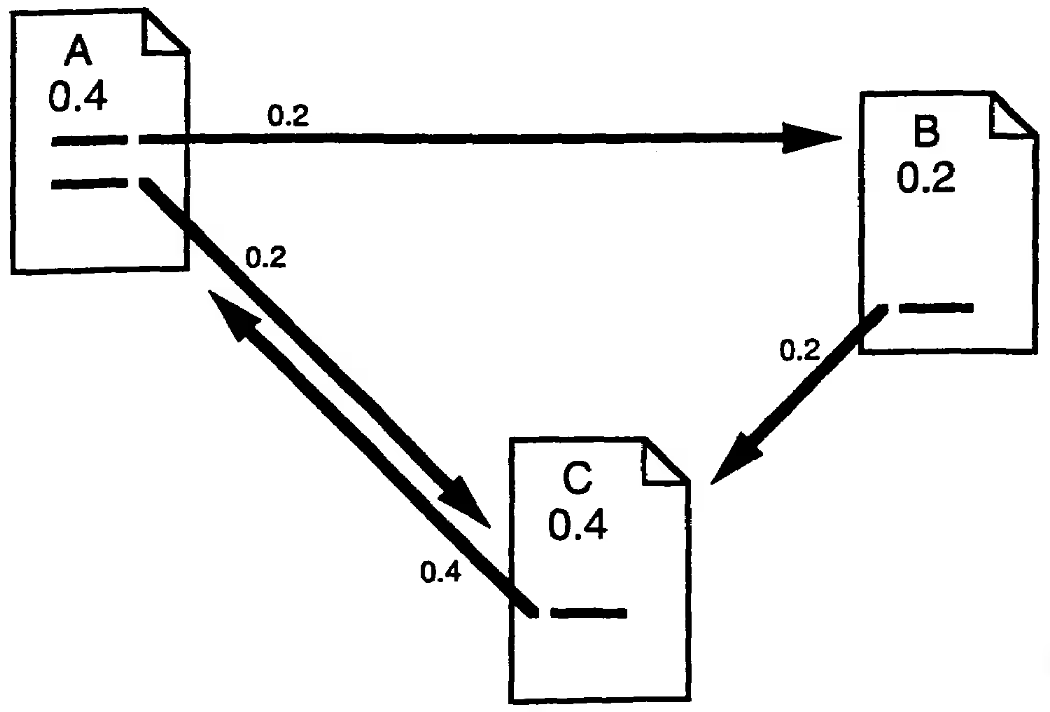
Source: U.S. Patent US7058628B1
Google has reiterated publicly and privately that it is difficult for them to understand the quality of documents or webpages on the Internet. They need to use signals such as user behavior and backlinks to understand which documents are helpful and where they should appear on SERPs.
Google previously made PageRank public. Anyone could check their website’s PageRank. However, in 2016, Google made the decision to remove access to the PageRank API.
These days, you’ll hear a lot about domain authority, a term popularized by Moz to replace PageRank. Most SEO tools, including Positional, provide authority metrics to signal which websites are most authoritative.
It’s important to note that PageRank and domain authority aren’t just a measure of the number of backlinks pointing to a website. These metrics also factor in the quality of the backlinks. For example, if you receive a backlink from Positional’s website, it will be worth less than if a backlink from a very authoritative website like the Wall Street Journal, which has many tens of thousands of backlinks pointing to it.
In other words, you want backlinks, but you also want backlinks from websites with a large number of other websites pointing to them. PageRank and domain authority try to quantify both the number of backlinks and the strength of those backlinks.
In the early days of SEO, search engines could be fairly easily manipulated. Website owners figured out that if they could simply build a large number of low-quality backlinks to their websites, that would lead to positive search engine rankings. However, over the years, search engines like Google have become very good at identifying spam and understanding the relevance of backlinks.
Today, you want a large number of backlinks from relevant, authoritative websites.
Positional’s website is largely about content marketing and SEO, and we wouldn’t, for example, want backlinks from websites totally unrelated to those core topics.
On the weekly Optimize podcast, when asked about the importance of backlinks, Ryan Bednar said that backlinks are as “important as ever,” but that high-quality backlinks are “harder to get than they used to be.”
I’ll discuss a few ways that you can build high-quality backlinks a little later in this article, but know that backlinks are by no means the only ranking factor. Google has said that, these days, hundreds of ranking factors are considered when determining where to place webpages on SERPs.
Types of Backlinks
In the early days of SEO, there was just one type of backlink. A normal hyperlink.
However, Google realized that website owners needed additional ways to tag or communicate the context of backlinks to search engines.
These days, not all backlinks are helpful for SEO. There are four major types of backlinks that you should be aware of:
Normal Backlinks, or Dofollow Links
Typically, backlinks, or dofollow links, will pass PageRank and are generally considered helpful for SEO. Here’s an example of a dofollow hyperlink:
In other words, a dofollow link is simply a normal hyperlink. You don’t need to add a rel="dofollow" attribute to the hyperlink in order for it to be considered dofollow.
Nofollow Backlinks
Google introduced the nofollow attribution or tag in 2005 as a way to combat link spam. A nofollow backlink is a backlink that contains the rel="nofollow" attribute:
Nofollow backlinks hint to Google that the backlink shouldn’t be trusted and that PageRank should not pass to the linked page. For example, backlinks from forums or blog comments would be nofollow. Nofollow backlinks are generally not considered helpful for SEO, but Google has said that it uses the nofollow attribute as a hint and that it might still use the backlink for context and to improve search rankings. So, in theory, nofollow backlinks could still be helpful for SEO.
Sponsored Backlinks
In 2019, Google released the rel=”sponsored” attribute. This attribute is added to hyperlinks when the hyperlink exists within a piece of sponsored content or if that backlink was purchased as a form of advertising.
Previously, Google recommended using rel="nofollow" for sponsored hyperlinks, but this updated attribute provides a clearer signal as to why the hyperlink was placed within a webpage. Similar to a nofollow link, a sponsored link hints to Google that the hyperlink should not pass PageRank, so it wouldn’t be helpful for SEO.
UGC Backlinks
As mentioned previously, Google initially rolled out the nofollow attribute to combat webspam, particularly comment spam.
Today, Google suggests using the rel="ugc" attribute on hyperlinks from user-generated content (UGC) pages:
Similar to nofollow and sponsored links, links containing this attribute hint to Google that the URL is not endorsed and should not pass PageRank.
How to Check Your Backlinks
There are a few different ways (including both free and paid options) to find the backlinks pointing to your website.
Google Search Console
Google Search Console (GSC) is a free SEO tool Google provides. It provides a limited amount of data regarding your website’s backlinks.
In GSC, head on over to the Links tab on the left-hand sidebar:
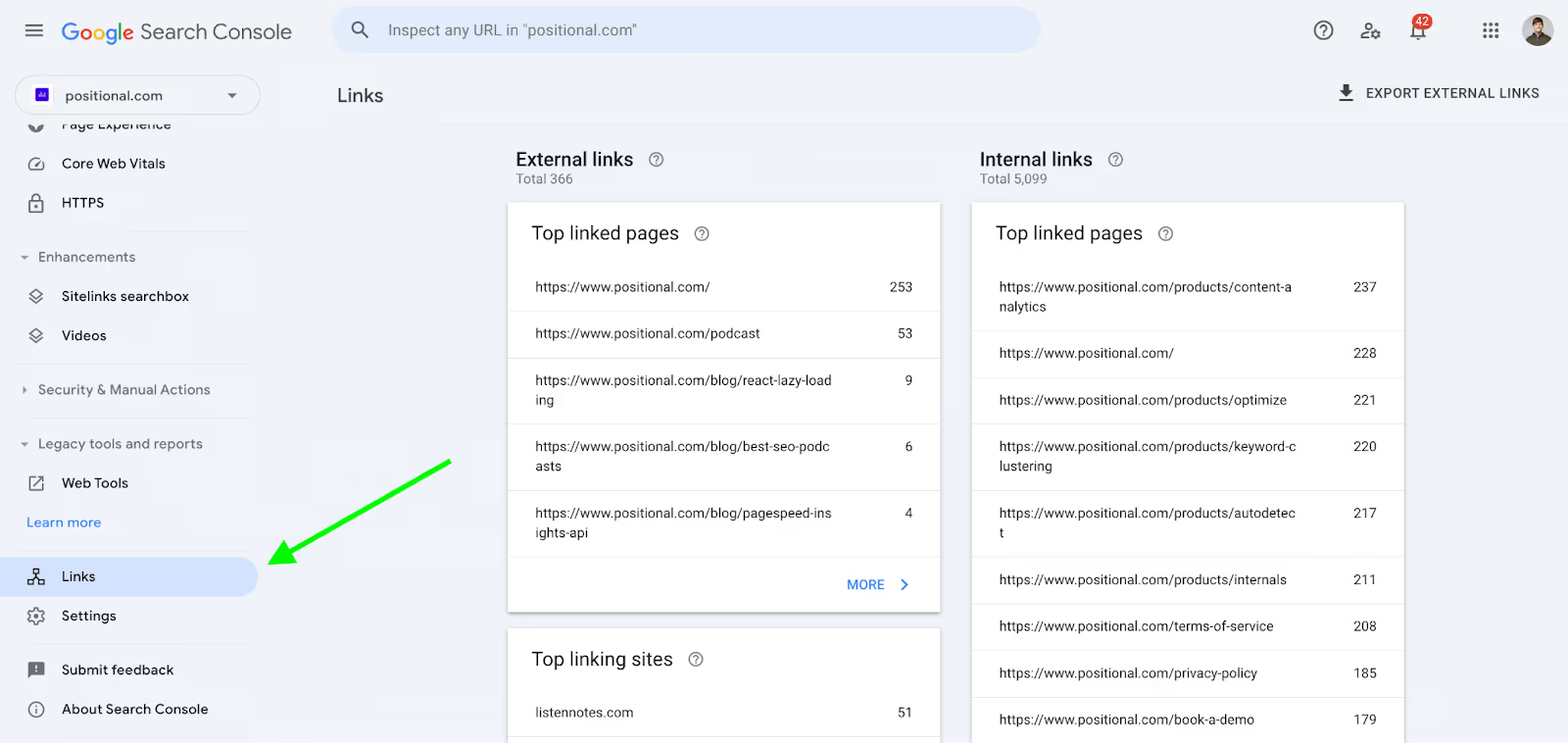
Google provides data on both external backlinks pointing to your website, as well as data on your website’s internal links.
In the Top linking sites tab, Google provides a list of domains that are linking to your website:
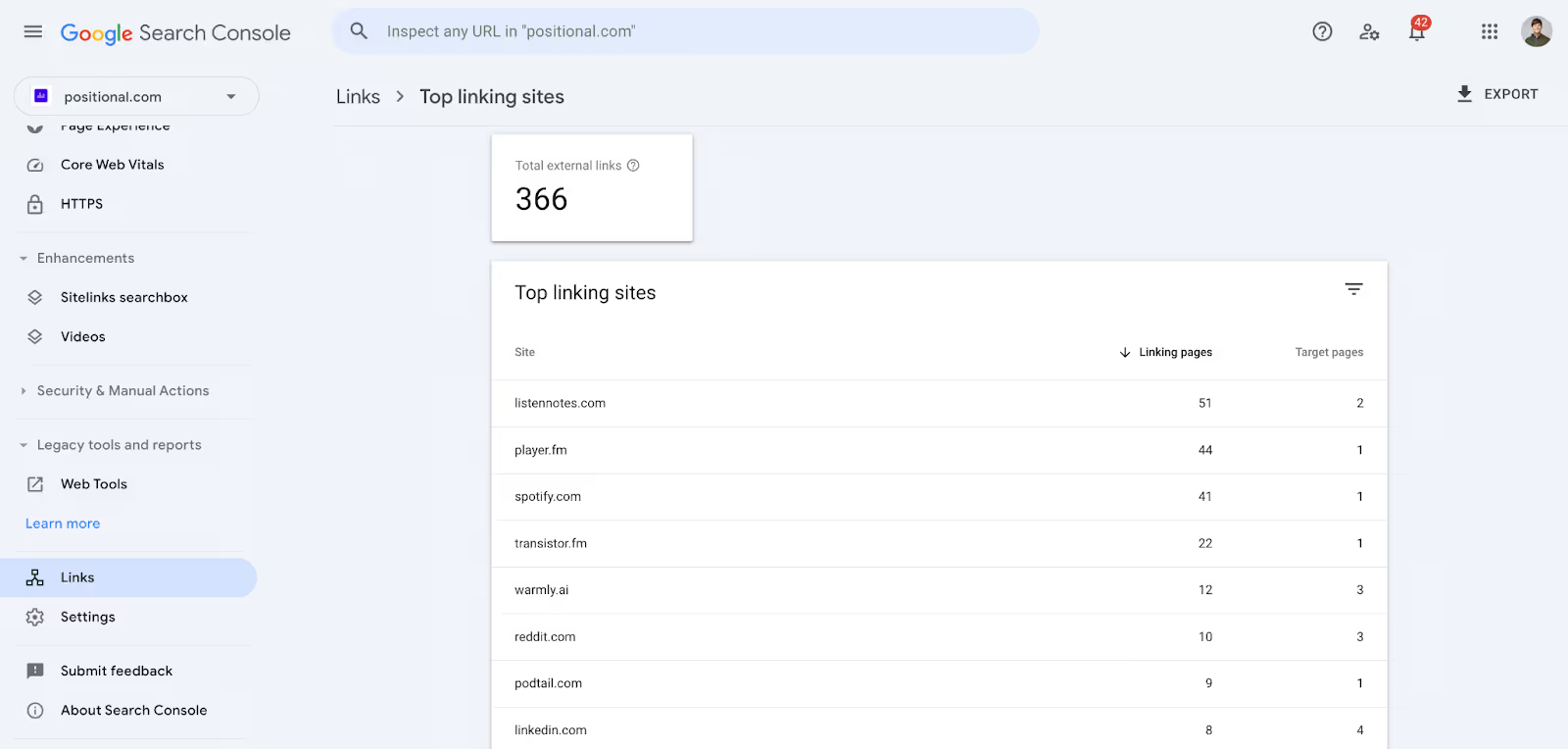
You can click on the individual rows to see the target pages that are receiving backlinks from the referring domain:
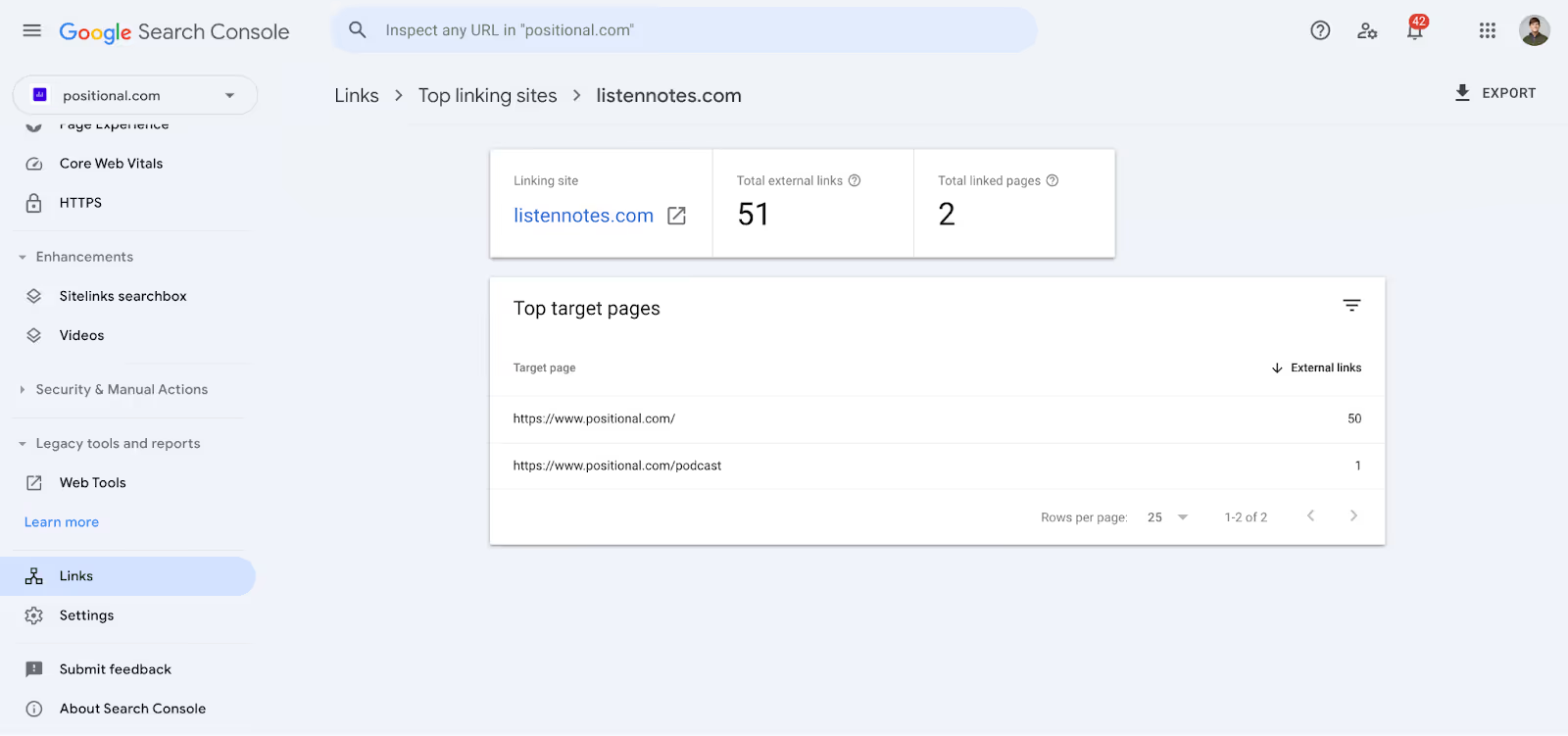
You can then click a layer deeper to see which URLs from the referring domain are linking to which URLs on your website:
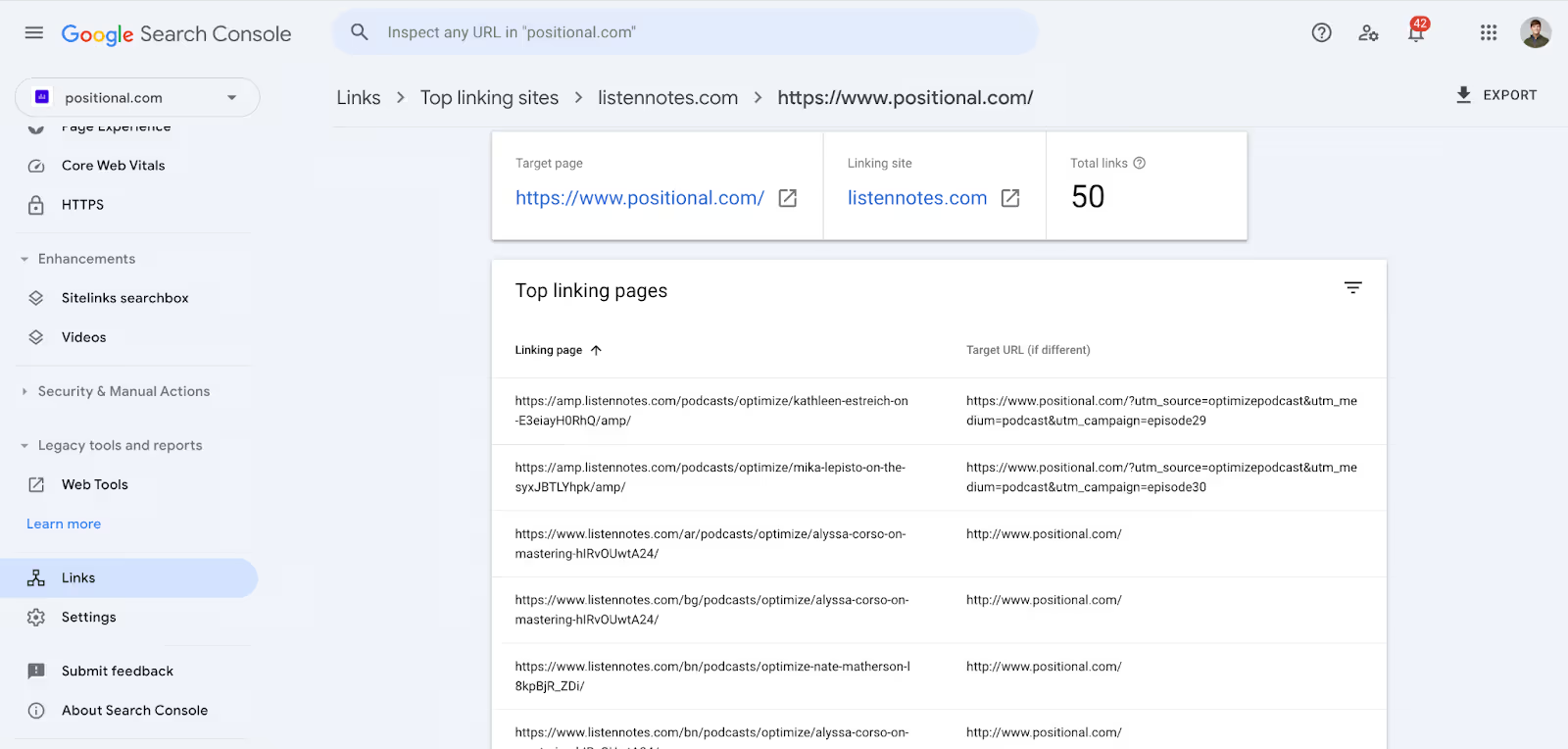
Google also provides Top linking text, or the anchor text, for the backlinks that point to your website:

Anchor text is important because Google uses it to understand your webpage's content.
There are many different types of anchor text, including exact match anchor text, where the anchor text on the hyperlink matches the primary keyword that you are looking to rank for. I’ve written extensively about anchor text in this guide.
To be honest, GSC is fairly limiting and often difficult to navigate. As a result, several paid software tools allow you to track backlinks at a greater scale and with significantly more filtering options. Two popular tools for tracking backlinks are Ahrefs and Semrush.
How to Build Backlinks
There are many ways to build backlinks to your website. Over the years, I’ve built thousands of backlinks — from small websites you’ve never heard of, from town and government websites, and from most of the world’s largest media companies.
When it comes to building backlinks, I tend to prioritize relevance and quality over sheer quantity. It’s important to mention that you want to build backlinks from many different websites or referring domains. There is a marginal return — for example, the 57th backlink you’ve built from a given referring domain is going to be less valuable than the first or second link you’ve built from a referrer.
The strategies below should be used in concert to build a natural-looking link profile — don’t rely too much on just one tactic. (And keep your focus on creating useful content; that’s step one.)
Create Fantastic Content
It might go without saying, but if you create fantastic content, you’ll find that people will naturally backlink to it over time.
For example, we recently wrote a fairly extensive guide to programmatic SEO, and it has started accumulating backlinks:
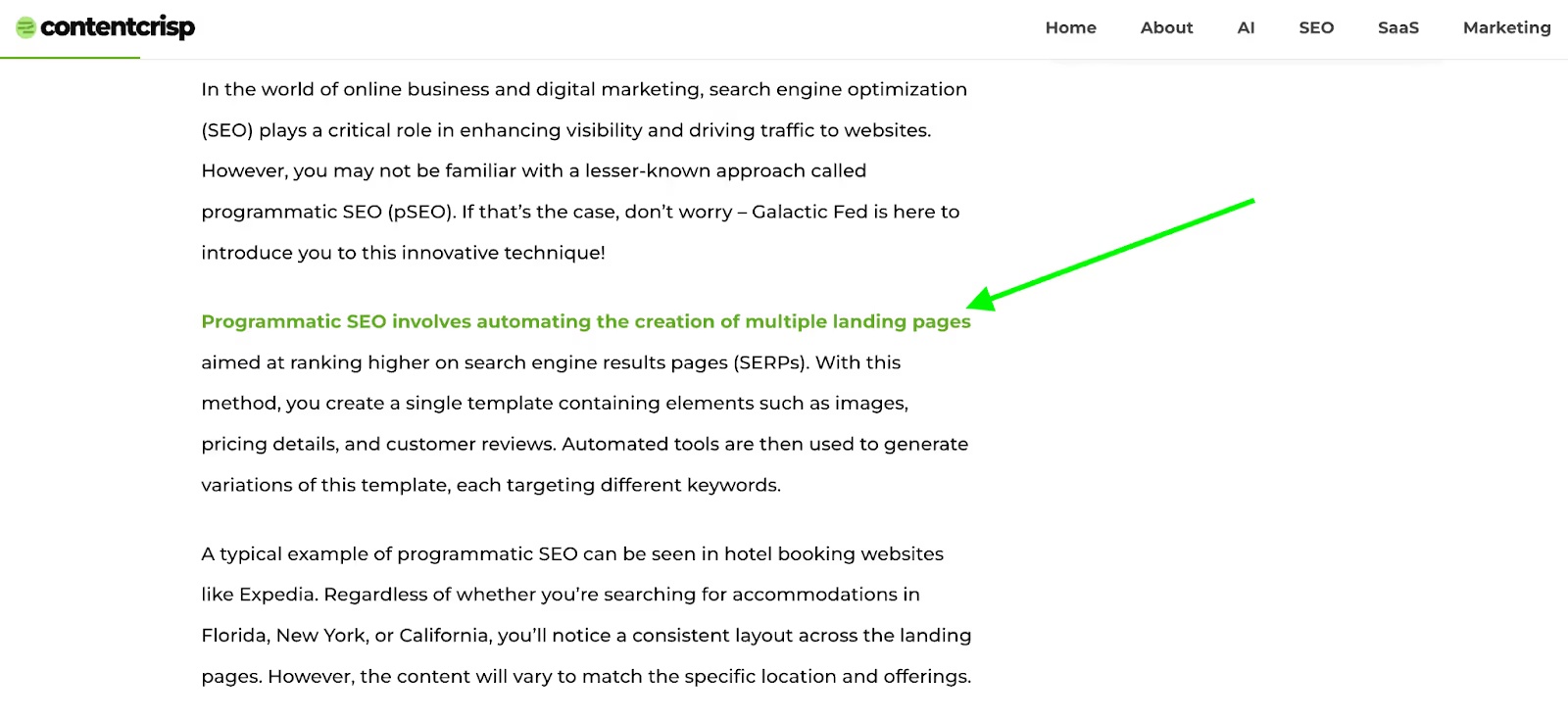
If you’re creating unique and helpful content, your pages will likely gather backlinks without too much further effort on your part, as they start ranking well on SERPs (on the first couple of pages).
Guest Blogging
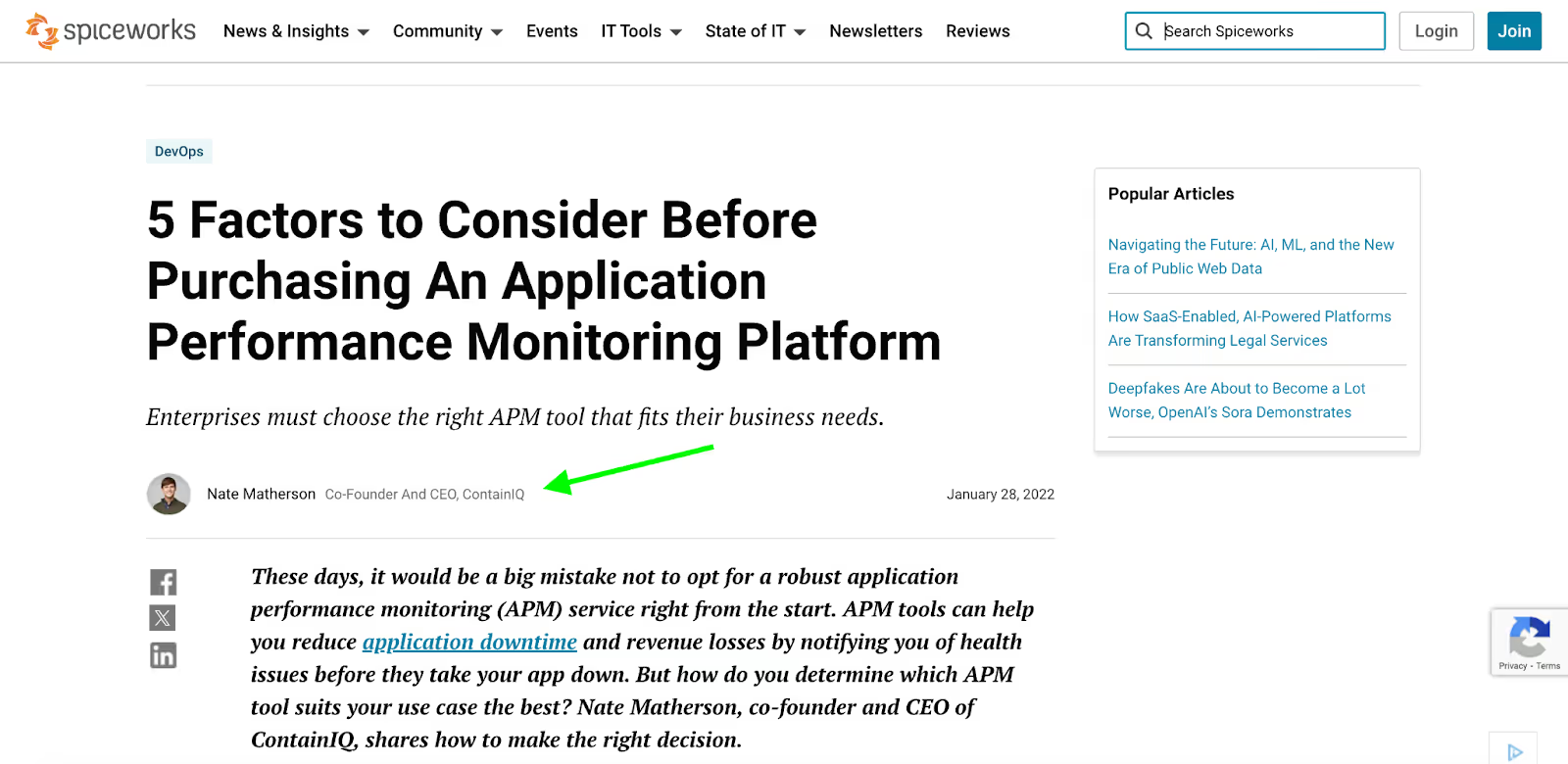
An example of a guest blog that I wrote for Spiceworks, when I was with my previous company.
Guest blogging, also known as guest posting, is one of the most popular link-building strategies. I’ve built hundreds of backlinks with guest blogging over the years.
Simply put, a guest blog post is an article you write for publication on another website. Within that piece of content, you’ll include backlinks to specific pages on your website.
Guest blogging is a great strategy because you’ll often have control over which pages are linked to and over those links’ anchor text.
But you don’t want to overdo it, and you want to be thoughtful about the websites you guest blog on. As Ann Smarty mentioned on the Optimize podcast, you want to guest blog on websites with real traffic, and on sites where your article will serve a bigger purpose than simply acquiring a backlink — for example, driving referral traffic and, hopefully, customers to your business.
You don’t, for example, want to guest blog on a spammy website that doesn’t receive significant traffic and isn’t relevant to your business. You also don’t want to pay to contribute a piece of guest content, as that would be sponsored content, and the backlinks pointing to your website from a page like that should have proper attribution, such as the nofollow or sponsored attribute.
In another, related episode Optimize, Vince Nero mentioned that guest blogging often requires a lot of pitching. So don’t get discouraged if you find yourself having to write a lot of pitches to secure opportunities to guest blog.
Resource Pages
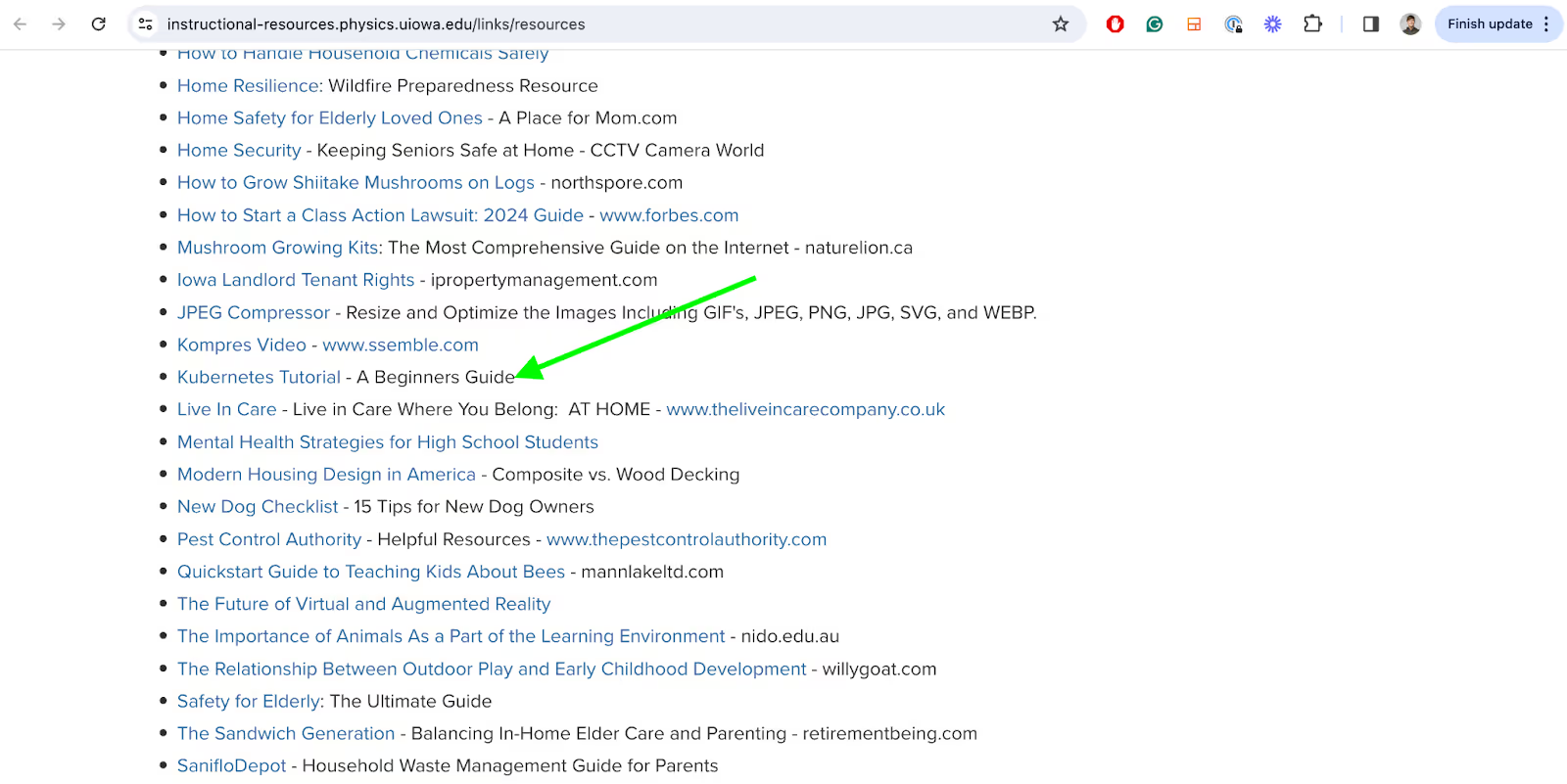
Building backlinks from resources pages is a little like doing outbound sales. You generally need to find a large number of webpages and send an equally large number of emails.
A resource page is simply a page with a collection of resources or hyperlinks. These pages often exist on government websites, libraries, colleges, high schools, and so on.
In the example above, again for a previous company, I built a backlink to one of our tutorials from the University of Iowa’s resource page for physics majors. I simply identified their webpage as relevant to our business and emailed them to ask if they would be willing to link to our tutorial page. And they did.
Your success rate will vary dramatically depending on the webpage you’re pitching and the topic category. My advice would be to pitch non-promotional content; for example, I wouldn’t pitch a product page from our website. Our campaigns typically yield between a 2% and a 10% success rate.
Link Bait

An example of a statistics page on NerdWallet’s website.
Creating link bait is simply creating content that is designed to accumulate backlinks naturally over time.
Most often, link bait involves creating pages rich in data. That data might be unique to your company or business, but it also might be an aggregation of other data sources on the internet.
In the example above, Nerdwallet has created a student loan debt statistics page. This page has accumulated more than 1,000 referring domains, largely from reporters and journalists who source it when mentioning student loan statistics within their articles.
Statistics pages are just one example of link bait. You can create many other types of link bait.
Data-Driven Content (Digital PR)
These days, you hear a lot about digital PR being an effective link-building strategy. And it is, especially if you already have a well-known brand.
Digital PR, or as I often call it, data-driven content, could be described as a form of link bait. In short, it involves creating unique data points, packaging those data points into interesting stories, creating helpful graphics, and pitching the story to journalists.
You can find data in a lot of places — for example, from government websites like the U.S. Census Bureau — or you can create original data with surveys. Even better, you might have a tremendous amount of unique data from your own datasets that could be used to tell stories about your customers or industry.
Our guide on building backlinks recaps my in-depth process for creating data-driven content and the strategies mentioned thus far. In addition, on the Optimize podcast, we chatted with Andrew Holland at length about digital PR and link building.
A Word of Caution
As I’ve mentioned, the best backlinks are highly relevant to your business and are from authoritative websites. Before you start building backlinks, you’ll want to familiarize yourself with Google link spam guidelines:
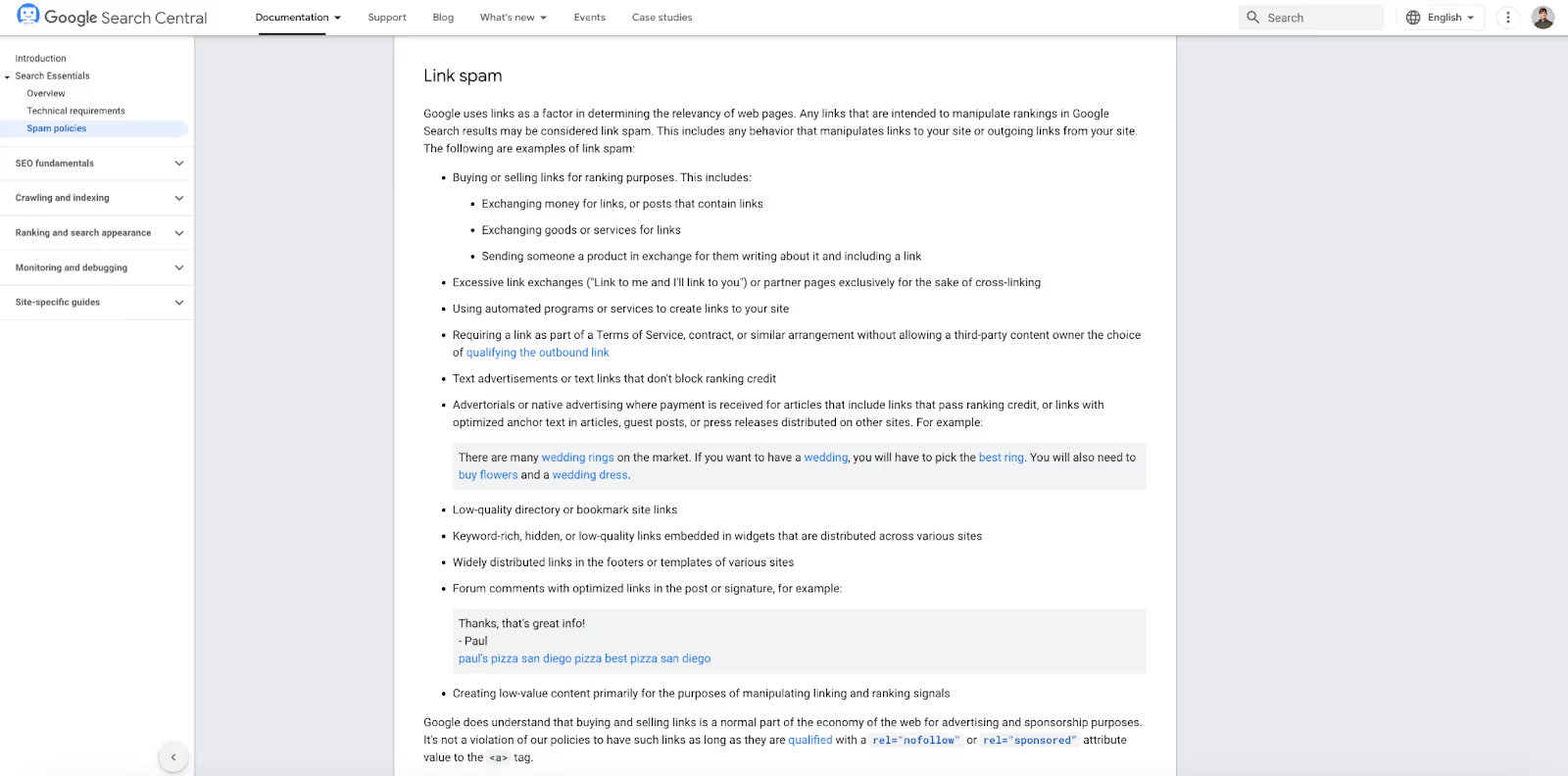
There are many ways to not build backlinks. For example, you don’t want to buy backlinks for the purpose of manipulating search results. I say this, but still, today, buying backlinks is a popular strategy, as outlined by Nathan Gotch on the Optimize podcast.
If Google catches you buying backlinks or building backlinks using another method that they’ve outlined that violates their guidelines, you could be subject to manual action.
On the podcast, Nathan mentioned that it typically costs about $300 to buy a good-quality backlink. I just generally don’t think it would be worth that price — in my career, I’ve found that building backlinks the right way is significantly cheaper. For example, I’ve had pieces of data-driven content go viral, generating hundreds of backlinks in the process, and from a cost-per-link standpoint, we’re talking about a fraction of the cost.
If you decide to hire a link-building agency, I would ask them for information about how they’re going to be building those links. The last thing you’d want is for a link-building agency to build low-quality or spammy backlinks to your website. Often, link-building agencies will simply resell you the backlinks they purchase, which I wouldn’t want.
Disavowing Backlinks
If you receive a manual action due to link building, you could use Google's disavow tool to remove those backlinks from its calculation. Alternatively, if your website suddenly receives a large number of spammy backlinks, you could proactively use the disavow tool.
The disavow tool should be used with caution and only if absolutely necessary. I don’t think it is necessary to regularly disavow backlinks, as Google has gotten better at automatically ignoring what they perceive as spammy backlinks.
Google provides a guide on disavowing backlinks.
Final Thoughts
Backlinks are incredibly useful for search engines like Google and are helpful for people navigating the internet.
For content marketers and SEOs, backlinks play an important role in helping Google find your pages and ultimately decide where and how well to rank your pages in organic search.
You can use Google Search Console as a free option for tracking backlinks pointing to your website, or you could supplement that analysis with a paid offering from tools like Ahrefs or Semrush.
As outlined in this article, there are many ways to build backlinks. When building backlinks, you’ll want to be careful to do it the right way, without violating Google’s guidelines, and you’ll want to do it in a variety of ways.
While I know backlinks are important, they are just one of many ranking factors. For most companies, I recommend spending all of your energy, at least initially, on picking the right keywords and creating fantastic content. But once you’ve done that, backlinks can help accelerate rankings and traffic to your website.





